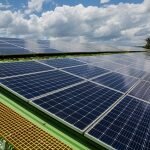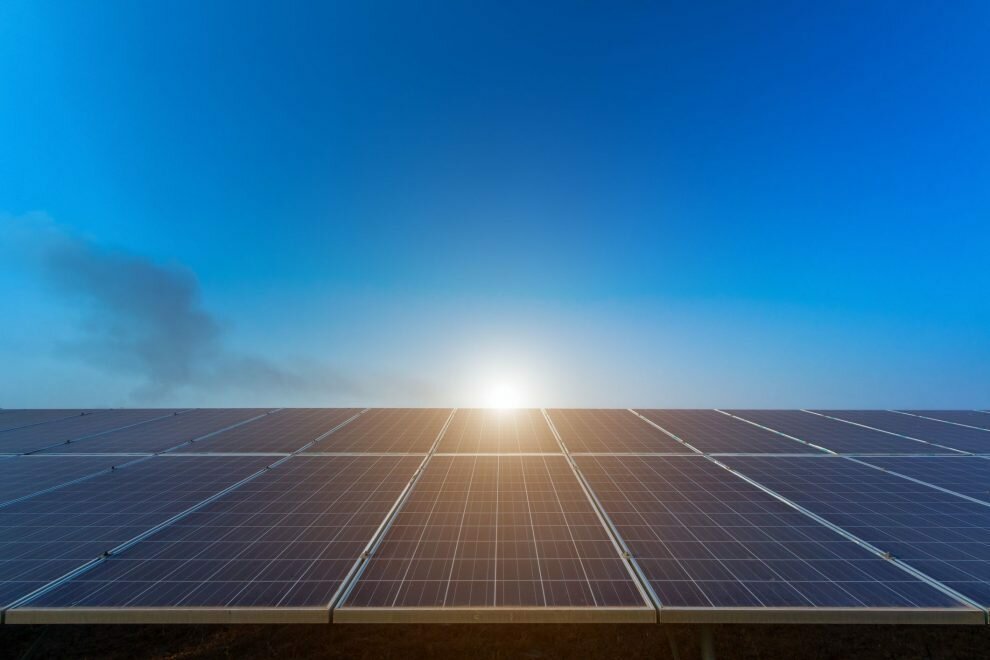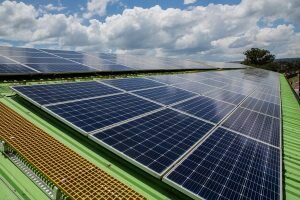Solar panels are a fast-growing renewable energy source, this is because it is cheap and easy to use.
Aside from that, it is sustainable and reliable. It has gained a lot of momentum over the years as a source of clean, cost-effective and efficient energy.
There are majorly three types of solar panels;
The Monocrystalline
The monocrystalline solar panels are the oldest and the most developed, they are made from 40 of the monocrystalline solar cells.
The cells are made from pure silicon. To manufacture this, a silicon crystal is placed in a vat of molten silicon, after which the crystal is then pulled out of the vat very slowly to allow the molten silicon form a solid crystal shell around it, this is called an ingot.
This ingot is sliced thinly into silicon wafers which are made into cells, which are eventually gathered to form a solar panel.
The monocrystalline appears black due to the way sunlight interacts with the pure silicon, they are shaped like a square with the corners removed so there are small gaps between the cells.
Polycrystalline Solar Panels
The polycrystalline solar panels are a recent development yet rising in population and efficiency.
They are like monocrystalline solar panels with cells made from fragments of silicon crystal melted together.
The silicon crystal is usually placed in a vat of molten silicon, unlike monocrystalline solar panel, the fragment is allowed to cool, once it molds, the fragments are sliced thinly into polycrystalline solar wafers, where they are then put together to form polycrystalline panels.
These polycrystals are usually blue due to the way sunlight reflects on the crystals. The reflection of sunlight on the silicon is different than it does with a pure silicon cell.
The shape of its cell is square and the back frames are silver with polycrystalline and there are no gaps between corners of the cells.
Thin-film Solar Panels
The thin-film solar panel as its name implies is thinner in appearance than the silicon wafers by approximately 350 times.
They are recently developed solar panels which are made from a variety of materials, they include cadmium telluride, amorphous silicon and Copper Indium Gallium Selenide.
They are made by placing the main materials in between thin sheets of conductive materials, a layer of glass on top to protect it. They can be either black or blue depending on the chosen materials they are made from.
As their name suggests, thin-film panels are easy to identify by their thin appearance. These panels are approximately 350 times thinner than those that use silicon wafers.
But thin-film frames can be large sometimes, and that can make the appearance of the entire solar system comparable to that of a monocrystalline or polycrystalline system. Thin-film cells can be black or blue, depending on the material they were made from.
These solar panels are all efficient but the monocrystalline is more efficient at 20 percent while the polycrystalline is at 15 to 17 percent efficiency making the thin-film solar panel the least efficient at 11 percent.





![MIT opens Solv[ED] Youth Innovation Challenge for young people ($200,000) Solv[ED] Youth Innovation Challenge - cleanbuild](/wp-content/uploads/2021/09/SolvED-Youth-Innovation-Challenge-150x150.jpg)












![MIT opens Solv[ED] Youth Innovation Challenge for young people ($200,000) Solv[ED] Youth Innovation Challenge - cleanbuild](/wp-content/uploads/2021/09/SolvED-Youth-Innovation-Challenge-74x55.jpg)

